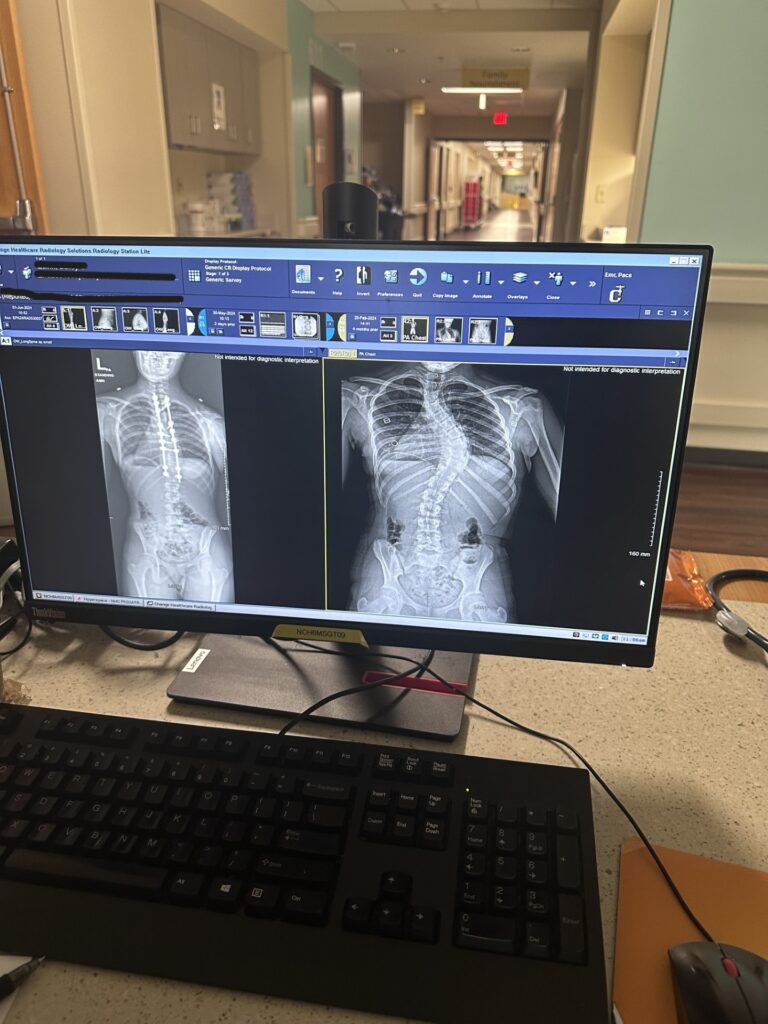
At age 14, Bailey Quinn is living proof that sometimes the biggest challenges lead to the most remarkable comebacks. Just months after major spinal surgery for scoliosis, this Owensboro, Kentucky, freshman is not only back on the soccer field—she’s starting with the varsity team and playing nearly entire games.

Early signs and diagnosis
Bailey’s scoliosis journey began during a routine kindergarten physical, when her pediatrician, noticed Bailey’s shoulder blades weren’t even. A referral to Joshua W. Meier, M.D., orthopedic surgeon with Norton Children’s Orthopedics of Louisville, confirmed the diagnosis: idiopathic scoliosis affecting her thoracic spine. Put simply, she had a curvature of the middle back that had no apparent cause.
“I was really young when we found out I have scoliosis,” Bailey said. “I just remember my mom showing people my X-rays.”
For years, Bailey managed her condition with a night brace, beginning in second or third grade. The adjustment was tough at first, but over time she grew used to it and found comfort in the routine.
“In the beginning when I started bracing, I would wake up and cry and go to my mom’s room every time, every night,” Bailey said. “But then after a while it got comfortable to wear to bed and it actually felt better to wear the brace to bed than not wear it.”
The turning point

By sixth grade, Bailey began experiencing pain. Her curvature had progressed to 70%. At this point, surgery became necessary. Her mother, Laurie Quinn, a psychiatric mental health nurse practitioner, knew they were facing a major decision.
Left untreated, scoliosis can put pressure on the spine and cause many other issues, including a deformed physical appearance, pressure on the internal organs and pain.
“Once the spine is fighting gravity, you pretty much have to do surgery,” Laurie said. “We were concerned about her growth plates being closed, so we tried to delay [surgery]. Tests later showed her growth plates had closed, which usually means growth is complete. But after surgery, she grew almost three inches, so it was pretty impressive change.”
Scoliosis surgery day and recovery
On May 30, 2024, Bailey underwent a posterior spinal fusion at Norton Children’s Hospital in Louisville. The family’s experience was made easier thanks to the Ronald McDonald House, which allowed them to stay together during this challenging time.
“That is a huge asset to your community, because we were able to bring her sisters with us, and we were all able to stay together,” Laurie said. “The staff were very helpful, and they got us where we needed to go.”
The three-day hospital stay had its difficult moments, but Bailey found comfort in the exceptional nursing care. A particularly meaningful encounter came from her night nurse on the second night — someone who had undergone the same surgery with Dr. Meier 20 years earlier.
“The nurses were right there. I would wake up crying and they’d come help me,” Bailey says.
A speedier-than-expected recovery
What followed scoliosis surgery surprised even Bailey’s medical team. Her recovery progressed remarkably quickly, earning her the distinction of being “not normal” from Dr. Meier — in the best possible way.
“The second month, I had barely any pain and I was moving a lot more,” Bailey said.
By August, just three months after surgery, she was active again.
“The beginning of August, I was doing a lot. I was walking,” Bailey said. “I could do so many more activities, and it didn’t hurt.”
Dr. Meier cleared Bailey for light athletic activities in July and full sports participation by December — earlier than most patients. Further proof of her remarkable recovery came during a family lake trip when she went tubing with her cousins.
